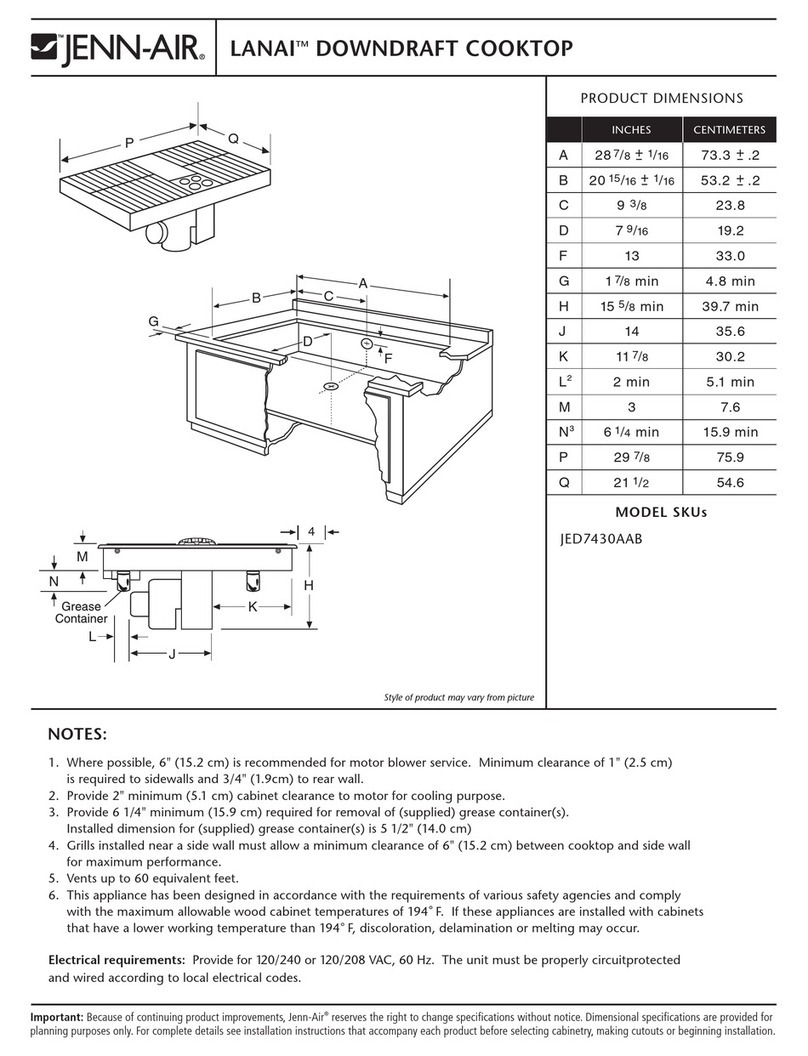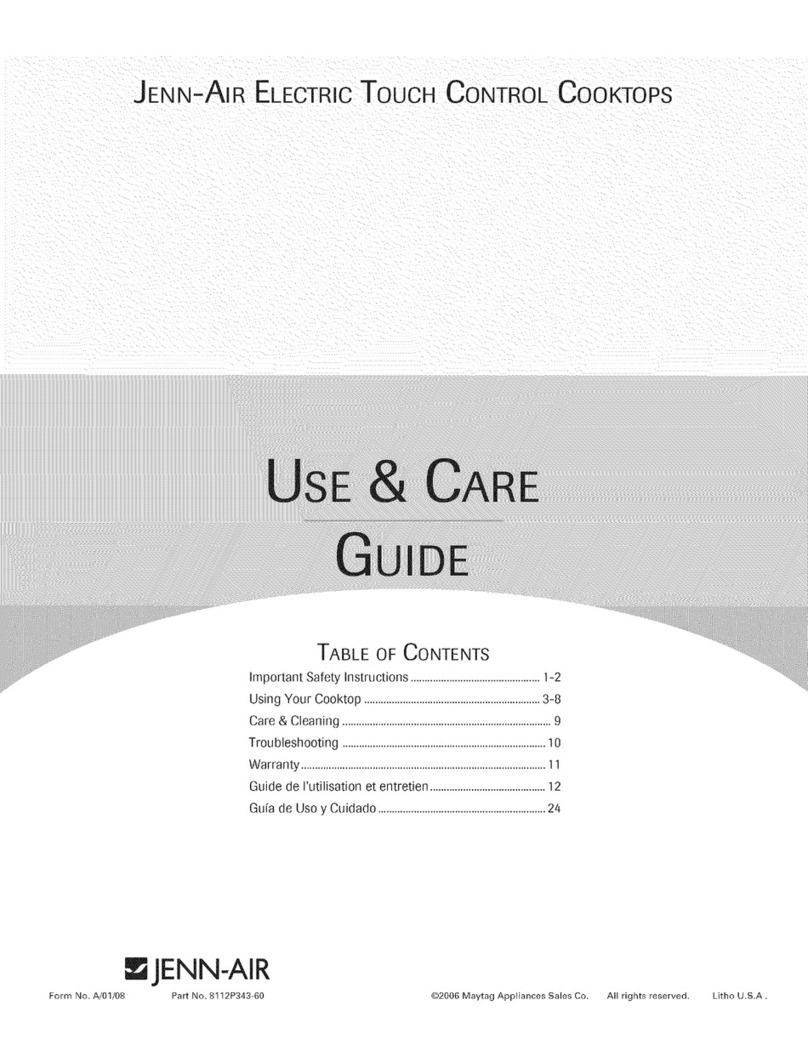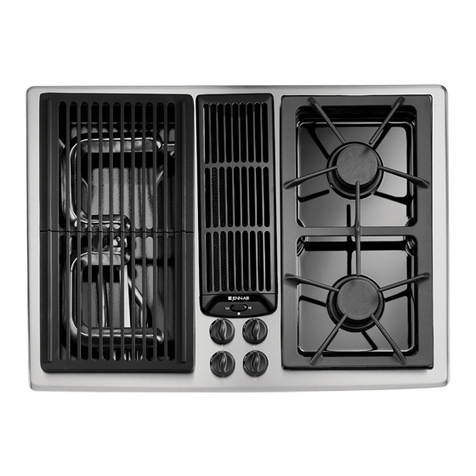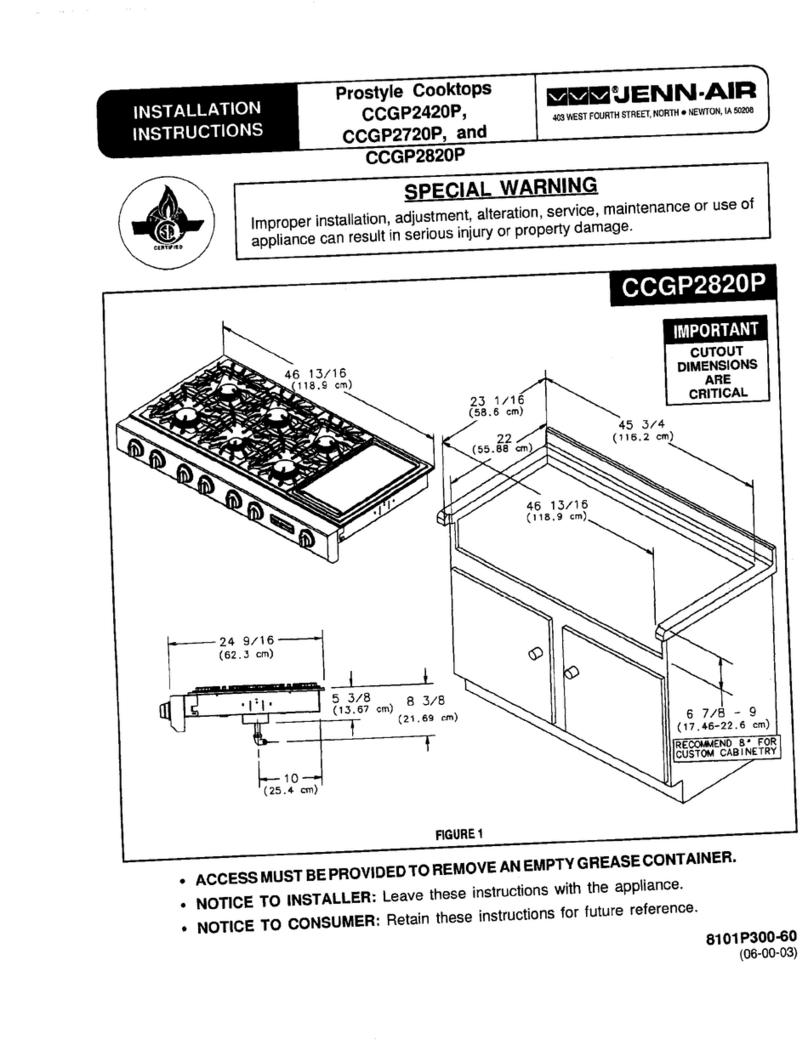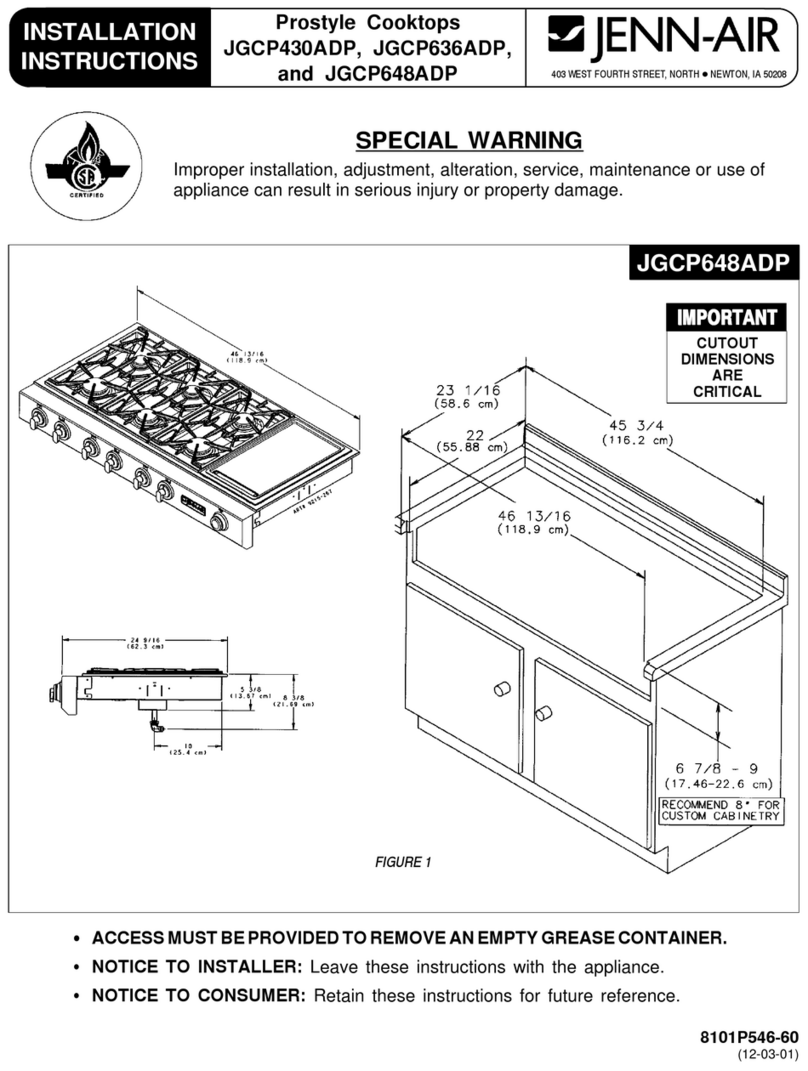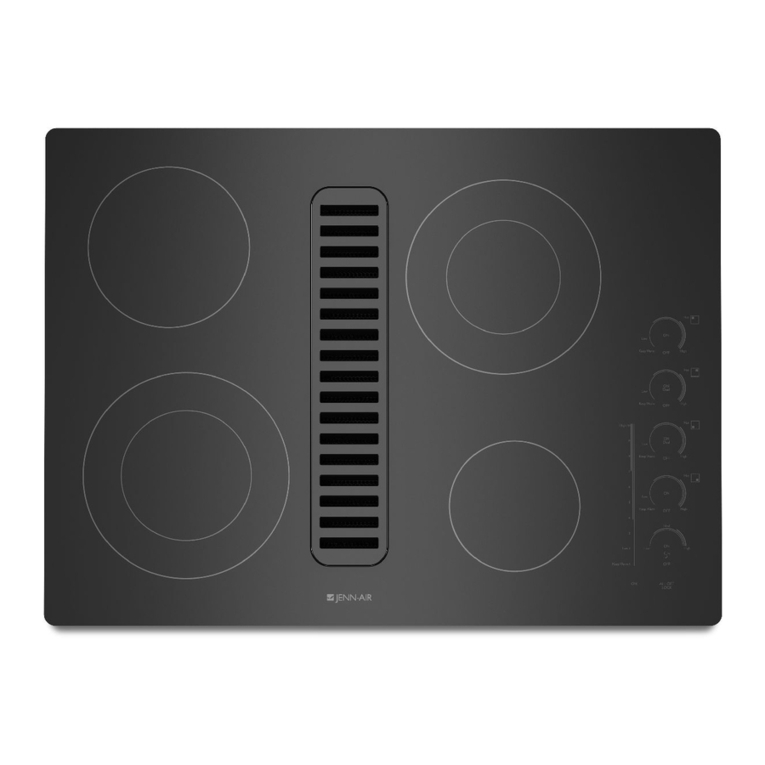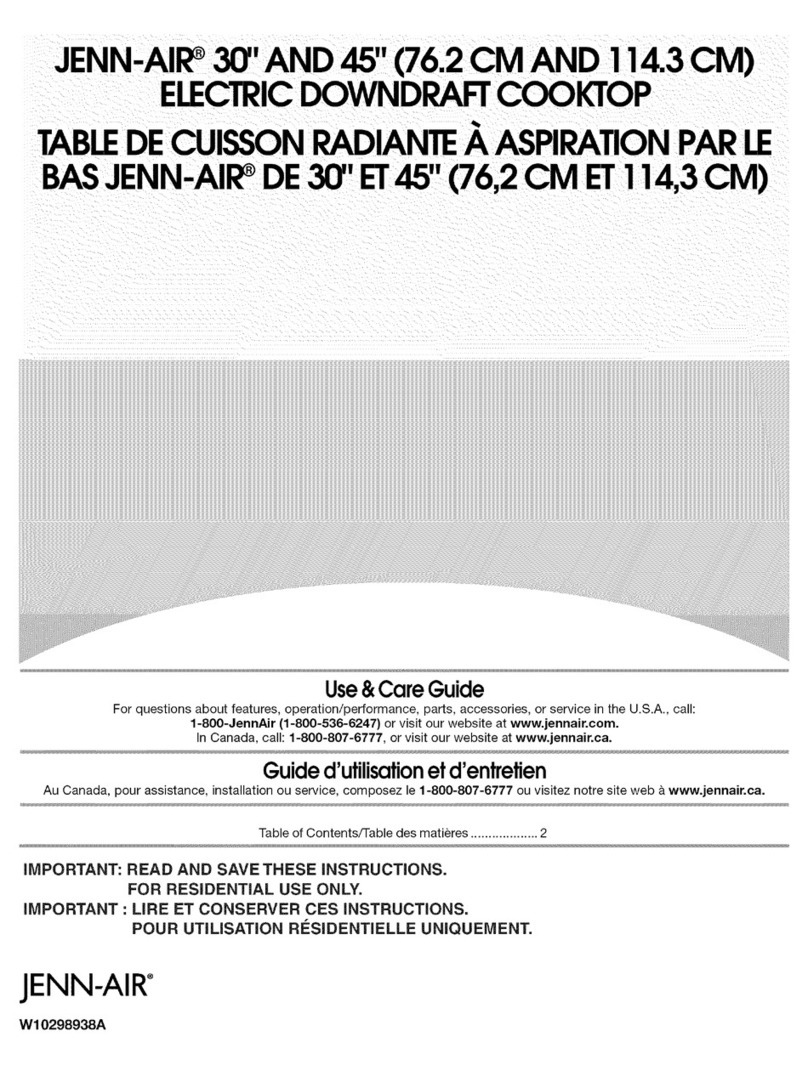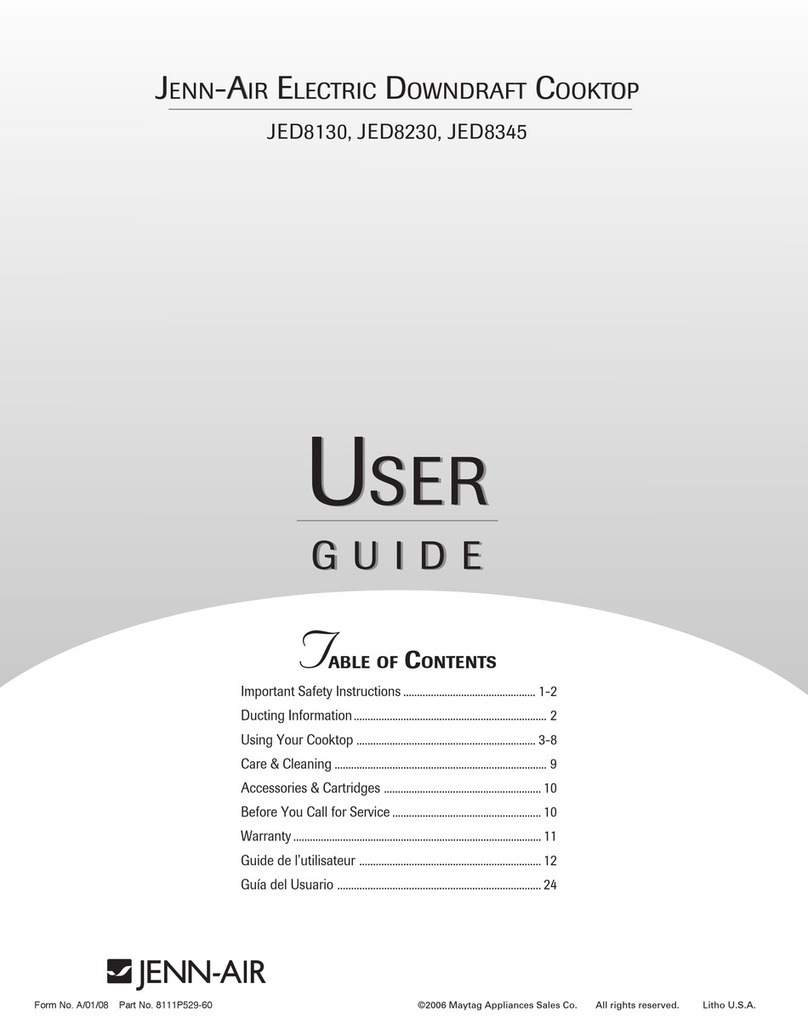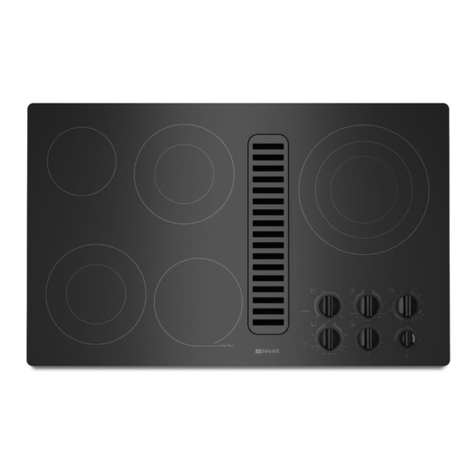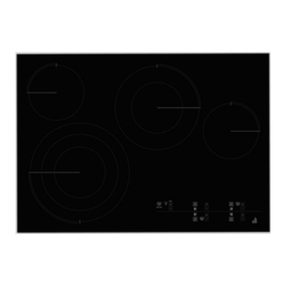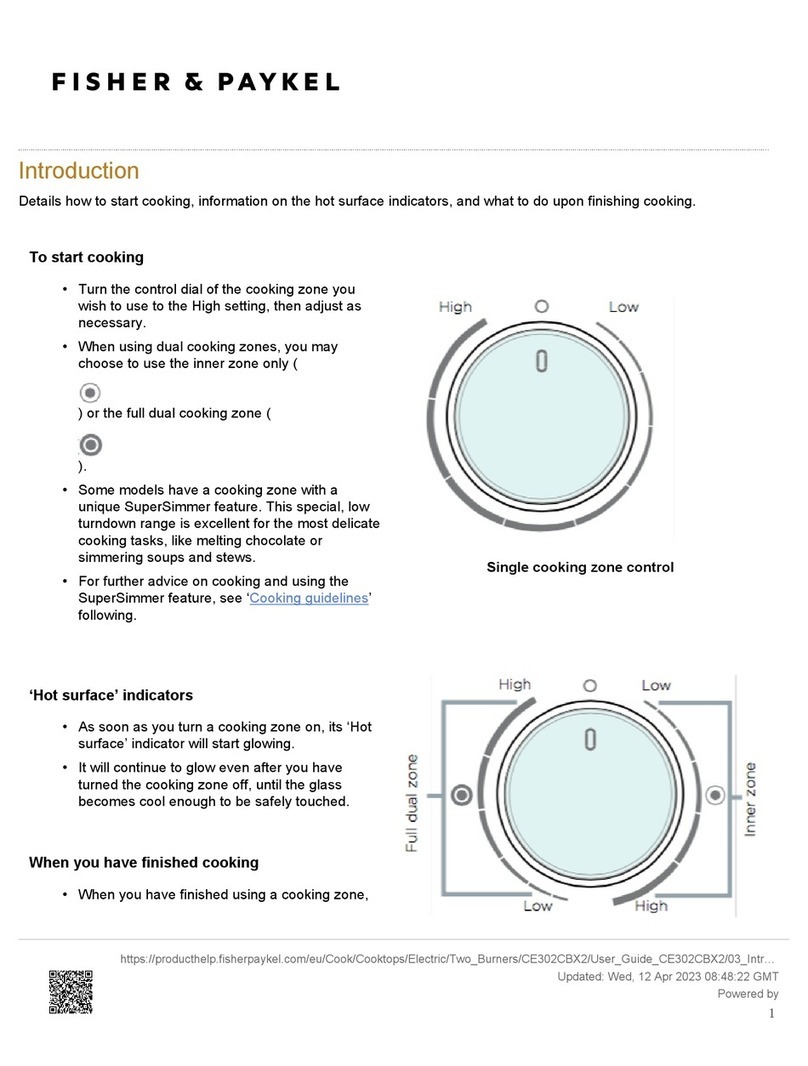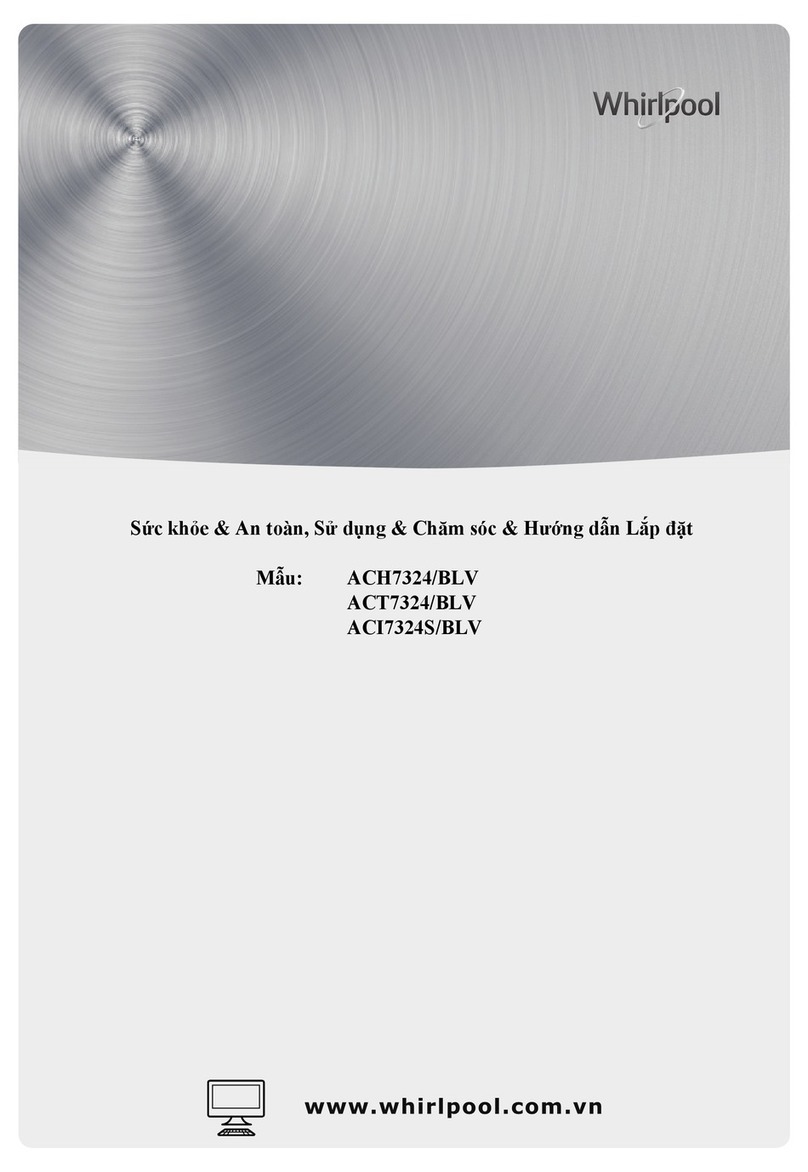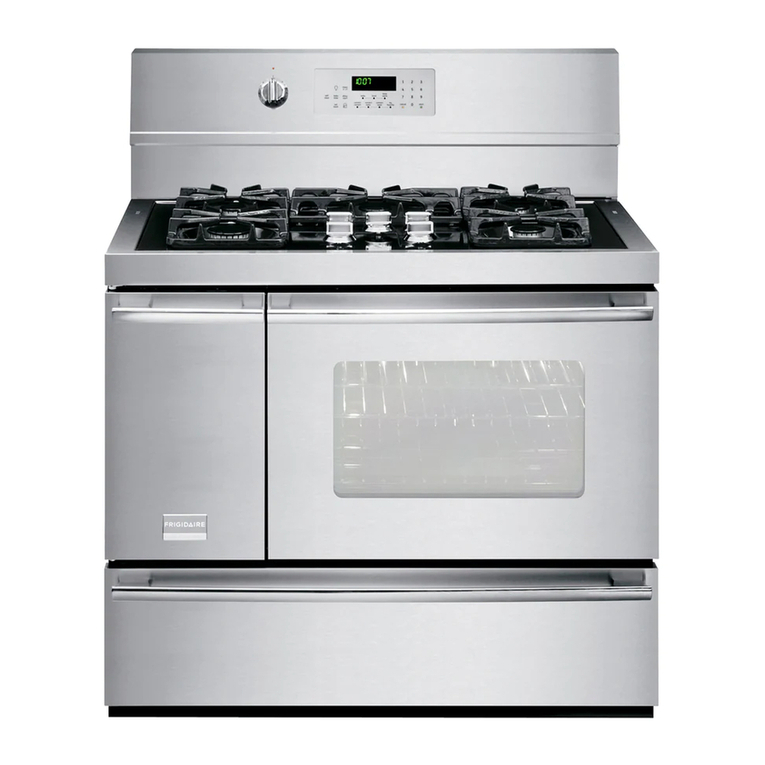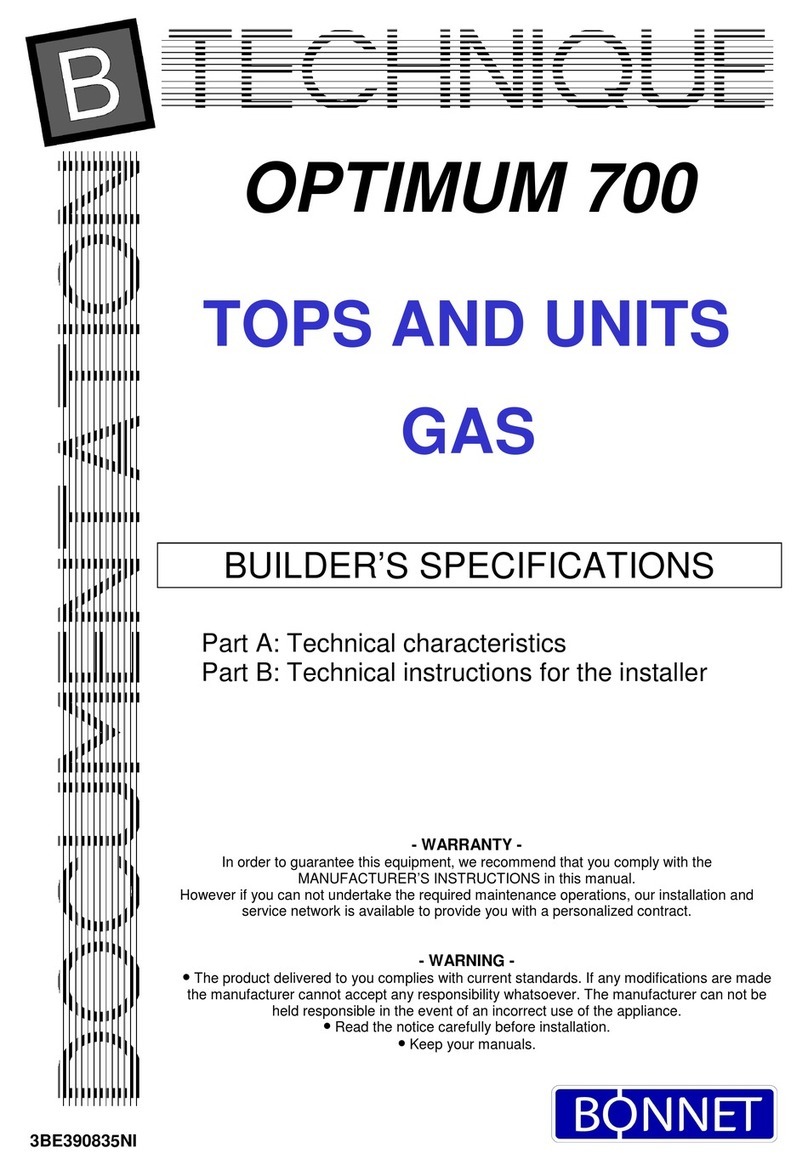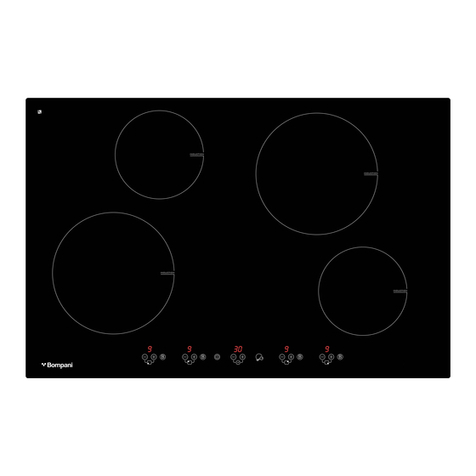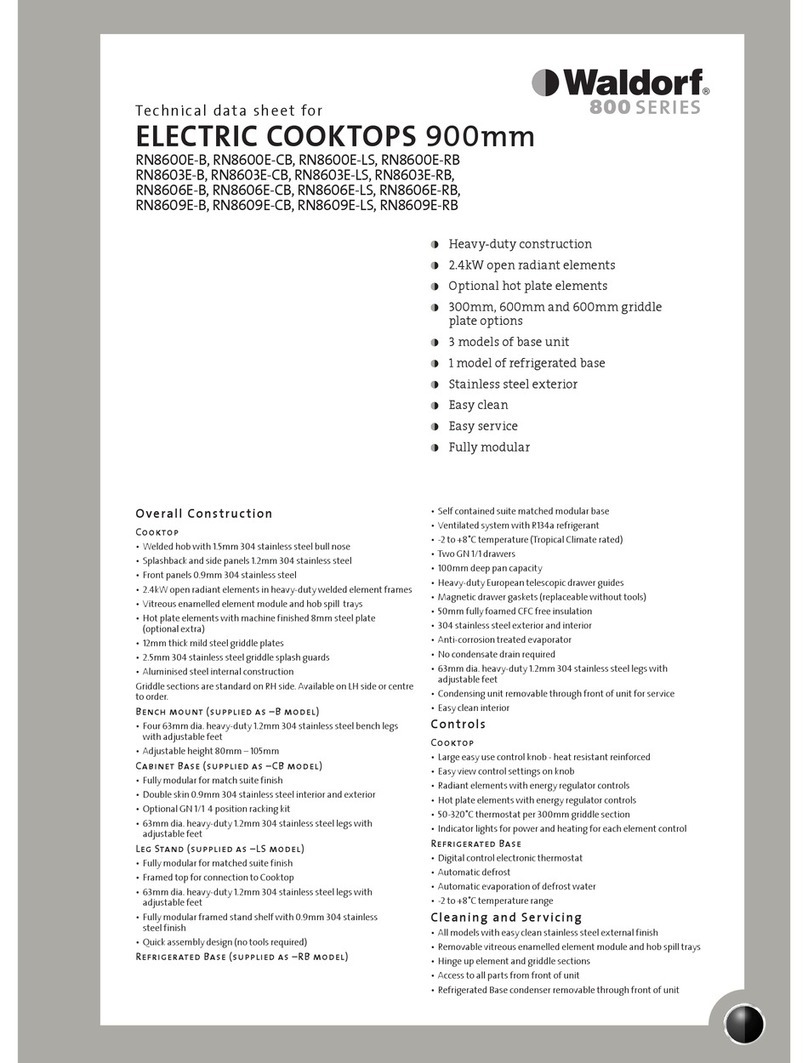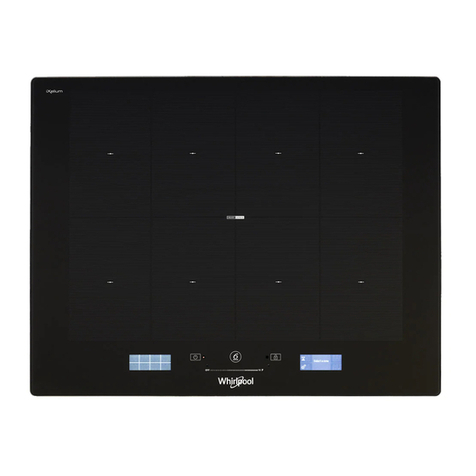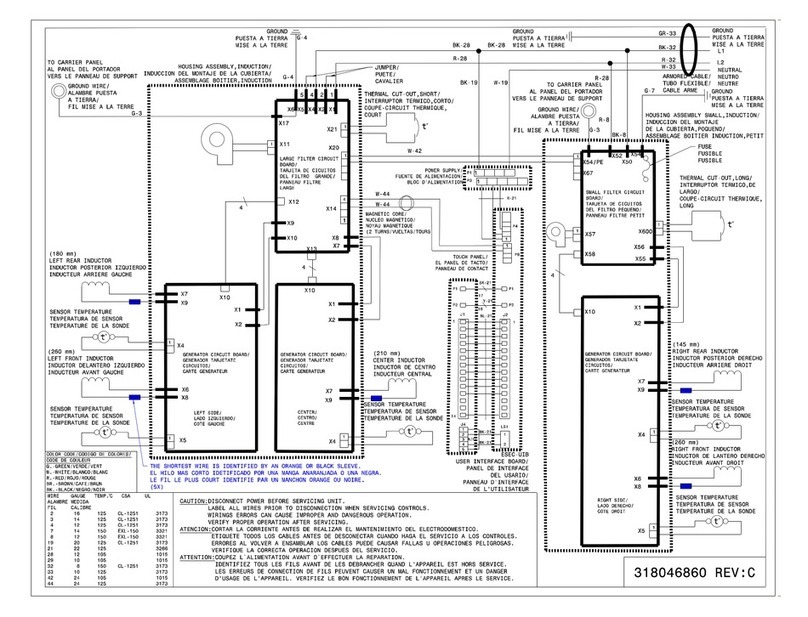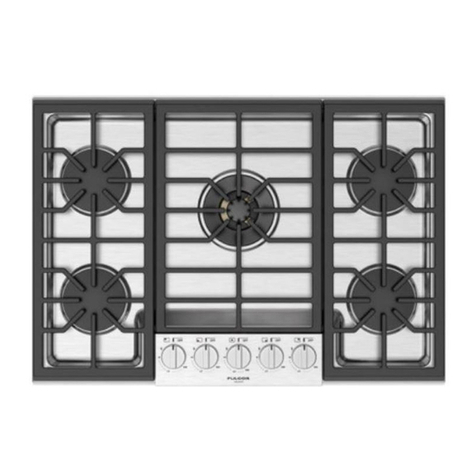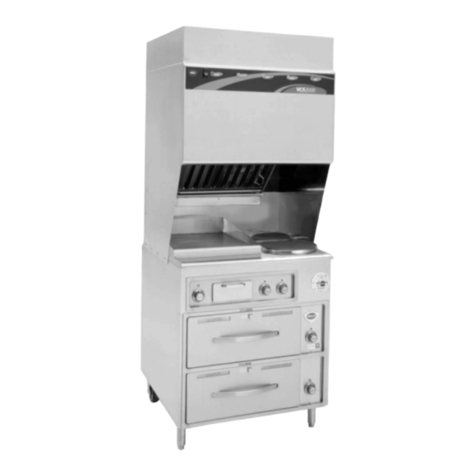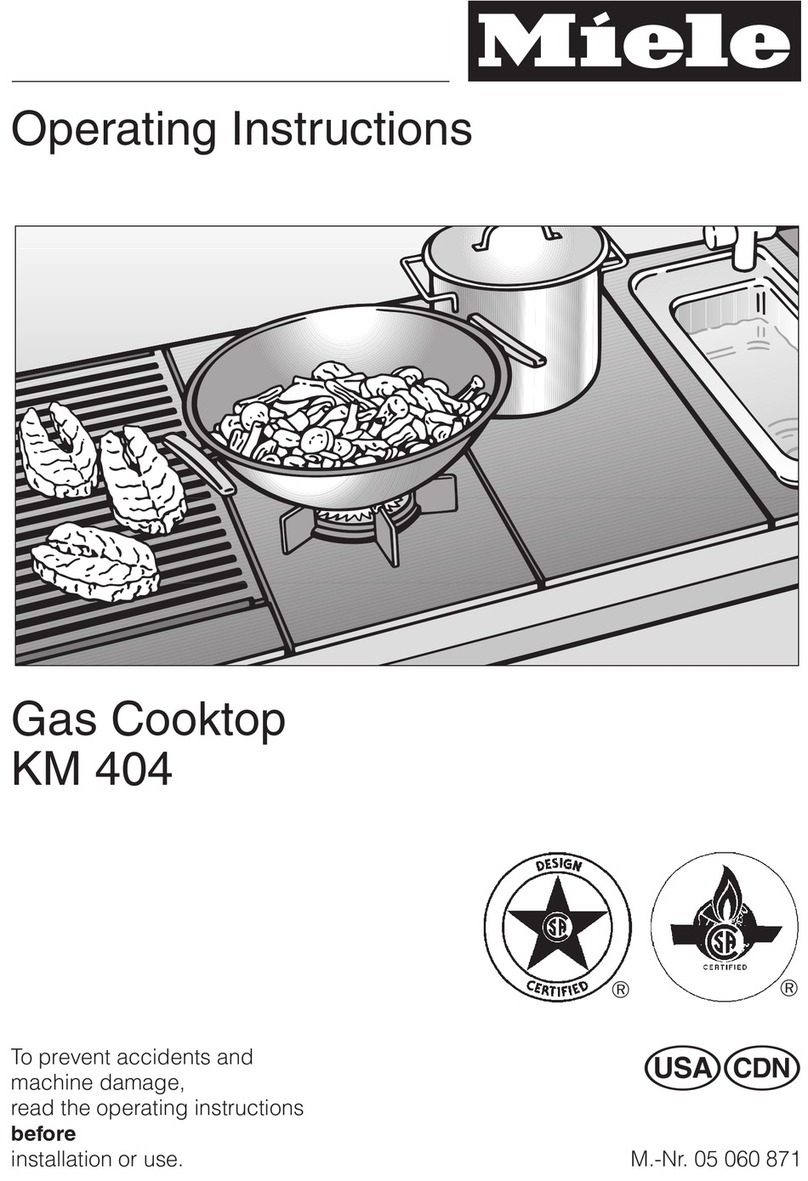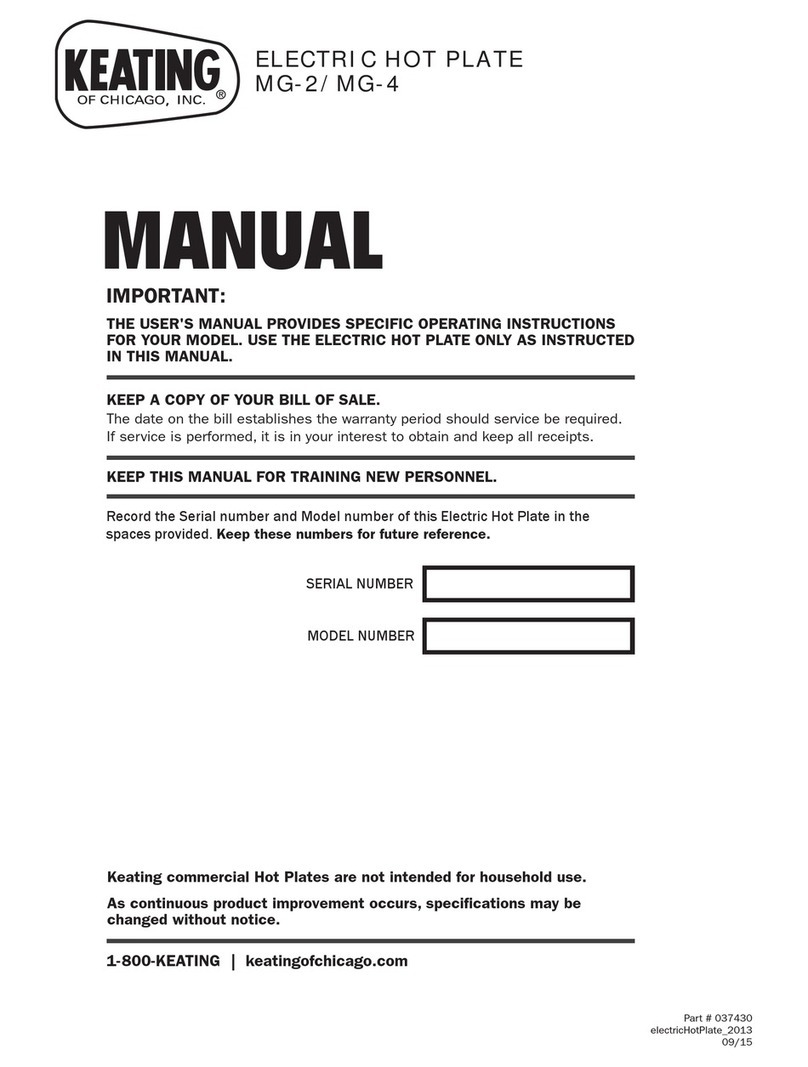
4
NOTES: After making the countertop cutout, some installations
may require notching down the base cabinet side walls to clear
the cooktop base. To avoid this modification, use a base cabinet
with sidewalls wider than the cutout.
■Where possible, a 6" (15.2 cm) clearance is recommended for
motor blower service. A minimum clearance of 1" (2.5 cm) is
recommended to the sidewalls and a ³⁄₄" (1.9 cm) clearance is
recommended to the rear wall.
■A minimum clearance of 2" (5.1 cm) is recommended between
the motor/blower and cabinet for proper cooling.
■A minimum clearance of 6¹⁄₄" (15.9 cm) is recommended for
removal of the grease container(s). Installed dimension for the
grease containers is 5¹⁄₂" (14.0 cm).
■For grills installed near a sidewall, a minimum clearance of
6" (15.2 cm) is recommended between the cooktop and
sidewall for maximum performance.
Cutout Dimensions
Venting Requirements
■Do not terminate the vent system in an attic or other enclosed
area.
■Use a Jenn-Air®vent cap.
■Vent system must terminate to the outside.
■Use only a 6" (15.2 cm) round metal vent. Rigid metal vent is
recommended. For best performance, do not use plastic or
metal foil vent.
■Before making cutouts, make sure there is proper clearance
within the wall or floor for the exhaust vent.
■Do not cut a joist or stud unless absolutely necessary. If a joist
or stud must be cut, then a supporting frame must be
constructed.
■The size of the vent should be uniform.
■The vent system must have a damper. If roof or wall cap has a
damper, do not use damper supplied with the range hood.
■Use only a 6" (15.2 cm) round metal vent or a 3¹⁄₄" x 10"
(8.3 x 25.4 cm) rectangular metal vent except for as follows:
■For electric models, 5" (12.7 cm) diameter round metal
vent may be used for venting straight out the back of the
cooktop and directly through the wall for a duct length of
10 ft (3.0 m) feet or less
■For gas models, 5" (12.7 cm) diameter round metal vent
must be used if the duct length is 10 ft (3.0 m) feet or less.
■Do not use 5" (12.7 cm) elbows except in a 5" (12.7 cm)
system. Instead, use a 5" (12.7 cm) to 6" (15.2 cm) elbow or a
5" (12.7 cm) to 3¹⁄₄" x 10" (8.3 x 25.4 cm) elbow transition.
■Use vent clamps to seal all joints in the vent system.
■Use caulking to seal exterior wall or roof opening around the
cap.
■Determine which venting method is best for your application.
For Best Performance:
■Use 26-gauge minimum galvanized or 25-gauge minimum
aluminum metal vent. Poor quality pipe fittings can reduce
airflow. Flexible metal vent is not recommended.
NOTE: Local codes may require a heavier gauge material.
■Metal duct may be reduced to 30-gauge galvanized steel or
26-gauge aluminized steel if allowed by local codes. This
reduction is based on information in the International
Residential Codes Section M1601.1 (2006 edition).
■Do not install 2 elbows together.
■Use no more than three 90° elbows.
■If an elbow is used, install it as far away as possible from the
hood’s vent motor exhaust opening.
A. 29" ±¹⁄₁₆" (73.6 cm ±0.2 cm) on 30" (76.2 cm) models
43¹⁄₄" ±¹⁄₁₆" (109.9 cm ±0.2 cm) on 45" (114.3 cm) models
B. 21" ±¹⁄₁₆" (53.3 cm ±0.2 cm) maximum on both 30" (76.2 cm) and
45" (114.3 cm) models
C. 9³⁄₈" (23.8 cm) on both 30" (76.2 cm) models and 45" (114.3 cm)
models
D. 7⁹⁄₁₆" (19.2 cm) on both 30" (76.2 cm) and 45" (114.3 cm) models
E. 1⁷⁄₈" (4.8 cm) minimum space to front edge of cooktop
F. Floor exhaust option
G. 6¹⁄₈" (15.6 cm) for 6" vent system
H. 9³⁄₈" (21.9 cm) on both 30" (76.2 cm) and 45" (114.3 cm) models
I. 13" (33.0 cm) on both 30" (76.2 cm) and 45" (114.3 cm) models
J. Wall exhaust option
AB
CD
E
F
G
H
I
J

